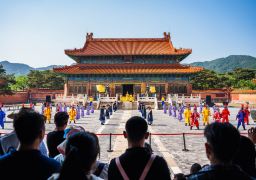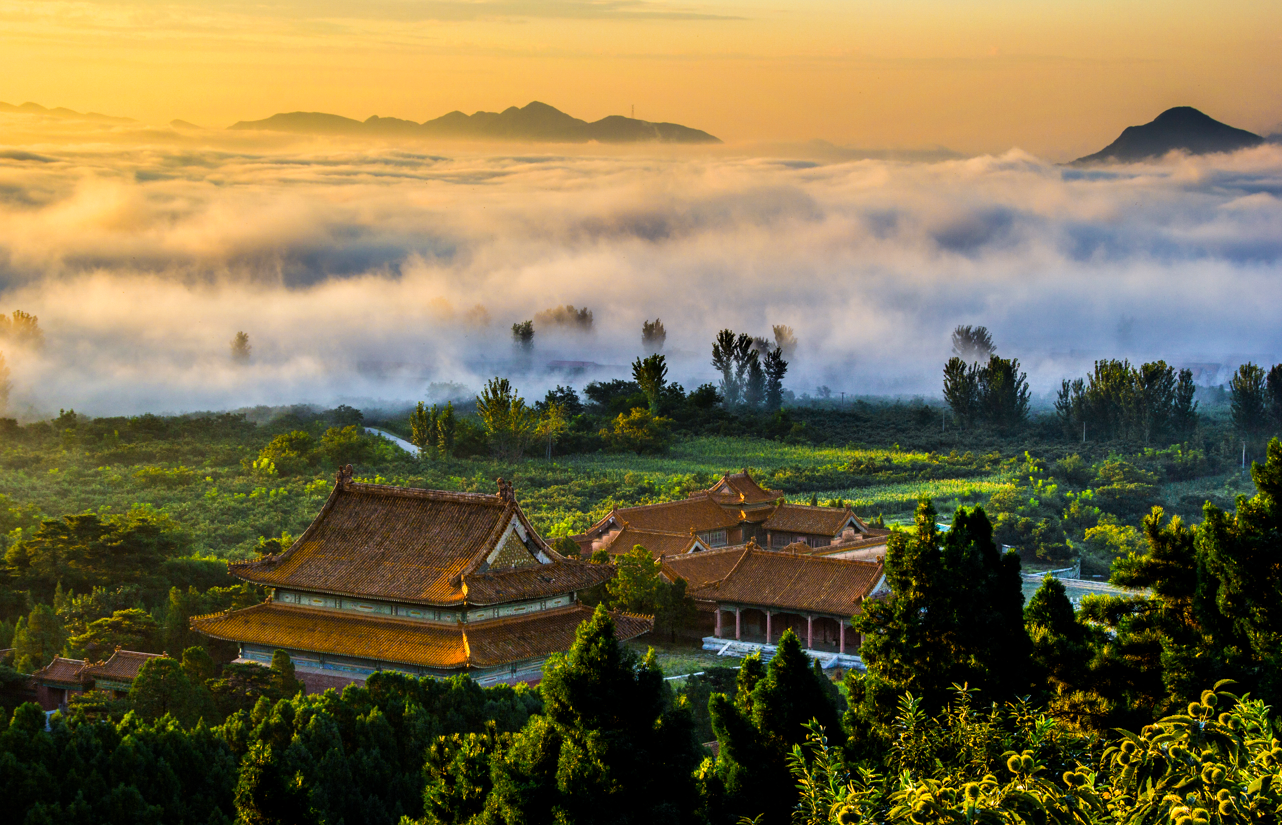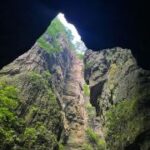Qing Dongling, the imperial tomb complex of the Qing Dynasty, is nestled at the foot of Changrui Mountain in the northwest of Zunhua City, approximately 30 kilometers from the city center. Recognized as one of the largest and most intact imperial tomb complexes in China, it proudly stands inscribed on the World Cultural Heritage list. This revered site serves as the final resting place for 161 individuals, including notable figures such as Emperors Shunzhi, Kangxi, Qianlong, Xianfeng, Tongzhi, Empress Dowager Cixi, and the Fragrant Concubine.
The legend behind Qing Dongling’s establishment is particularly captivating. It is said that Emperor Shunzhi, during a hunting trip, was so captivated by the area’s breathtaking landscape that he decided to establish the magnificent Qing Dongling on this auspicious land. However, with the fall of the Qing Dynasty, many of its treasures were pilfered, leaving only a limited number of artifacts for visitors to witness today.
The architectural layout of the entire complex is centered around the Xiaoling Tomb. Each tomb within the complex is composed of palace walls, Long’en Hall, side halls, square city towers, and the tomb mound. The square city tower, one of the tallest structures in the complex, houses a stone stele inscribed with the deceased’s posthumous titles in Chinese, Manchu, and Mongolian scripts.
A visit to Qing Dongling presents an opportunity to immerse oneself in a vast array of architectural masterpieces, each adorned with unique decorative and carving styles that reflect the high standards of architecture during that era. Within the scenic area, visitors can embark on a sightseeing bus journey along the main divine path, with stops at various points of interest including the stone archway, large stele pavilion, stone statues, and the seven-hole bridge, all of which are accompanied by guided tours.Upon entering the scenic area, one first encounters the Zhaoxiling Tomb built to the east of the main red gate, followed by the over 6000-meter-long main divine path of Xiaoling Tomb, which undulates with the terrain, creating a grand spectacle, with exquisitely carved figures and animal statues lining both sides. At the start of the divine path stands a wide stone archway, a marvel of imitative wooden architecture.
The Empress Dowager Cixi’s tomb and the Ci’an Tomb appear as two identical tombs side by side, but Cixi’s tomb is much more opulent and features a rare underground palace among the Qing Dynasty’s imperial tombs. However, the gilded interior walls and stone pillars have suffered significant damage. Pay attention to the relief on the steps in front of the hall, depicting ‘Phoenix above, Dragon below,’ which is exquisitely detailed.
Moving on to Yu Fei’s garden tomb, the burial place of Qianlong’s concubines, including the famous Fragrant Concubine (also known as Rongfei) and the demoted Empress Ulanara, you can view her restored portrait here.

Further east is Qianlong’s Yu Tomb, the largest and most exquisitely decorated tomb in Qing Dongling.
The underground palace is a must-see attraction.
After reaching the second transfer station, the guided tour concludes, and visitors can proceed on foot to explore the Empress Dowager Cixi’s tomb, Yu Fei’s garden tomb, Yu Tomb, and the exhibition hall. After the visit, the sightseeing bus will take you back to the main entrance’s visitor service center.Upon entering through the first stone gate, you are welcomed by walls meticulously decorated with exquisite Buddhist-themed carvings. These include depictions of the Eight Great Bodhisattvas, Tibetan and Sanskrit Buddhist scriptures, which are both impressive and deserving of your careful admiration.
Proceed to the Xiaoling Tomb via a sightseeing vehicle. This tomb is one of the few in the Qing East Tombs that has remained untouched by plunder, although the underground palace remains closed to the public. To gain entry to the main entrance of the Xiaoling Tomb, you must first watch the traditional performances that reenact the grand sacrificial ceremonies in period costumes.
Further to the east, you have the opportunity to visit the Jingling Tomb of Emperor Kangxi and the Erlang Temple. The site is accessible year-round, with operating hours from 08:30 to 16:30.

Regarding preferential policies:
– **Children**: Admission is free for those under 1.2 meters in height or aged six and under, with identification or household registration. A discount is offered to those aged between six and 18, inclusive.
– **Elderly**: Free entry is granted to individuals aged 70 and above, with valid identification. A discount is available for those aged between 60 and 69, inclusive, with ID.
– **Students**: A discount is provided for full-time undergraduate students and those of equivalent status, with valid ID.
– **Disabled**: A discount is offered to those presenting a disability certificate.
– **Military Personnel**: Active-duty military, disabled military personnel, and retired military personnel are granted free entry with valid ID.
These优惠政策 apply to enhance the accessibility and enjoyment of the site for all visitors.**Free Admission Policy**
**Blood Donors:**
Individuals who have made outstanding contributions are entitled to free admission with their relevant valid ID.
**Fire and Rescue Personnel:**
Free admission is granted to fire and rescue personnel upon presentation of a valid ID.
**Medical and Nursing Staff:**
Medical workers are offered free admission with their ID and a valid practice certificate during the following observances:
– China’s Physician Day (August 19)
– International Nurses Day (May 12)

**Talent Card Holders:**
– Holders of the Xing Zun Ying Talent Card enjoy free admission, including for themselves and their immediate family members (parents, spouse, and children), with their relevant valid ID.
– Holders of the Feng Huang Ying Talent Card receive free admission with their relevant valid ID.
– Holders of the Yan Zhao Ying Talent Card are also granted free admission with their relevant valid ID.
**’Three Affiliates’ Personnel:**
Free admission is provided to ‘Three Affiliates’ personnel with preferential treatment certificates. These certificates are issued by the competent department for work with veterans and are for:
– Relatives of martyrs
– Relatives of military personnel who died in service
– Relatives of military personnel who died of illness
Eligibility is subject to annual inspection.
**Service Facilities:**
**Parking:**
– **Qing East Tombs Parking Lot** is available at the entrance of the scenic area with a reference price of ¥10 per visit and offers 1000 parking spaces.
**Nursing Rooms:**
– Nursing rooms are conveniently located at the visitor center.









